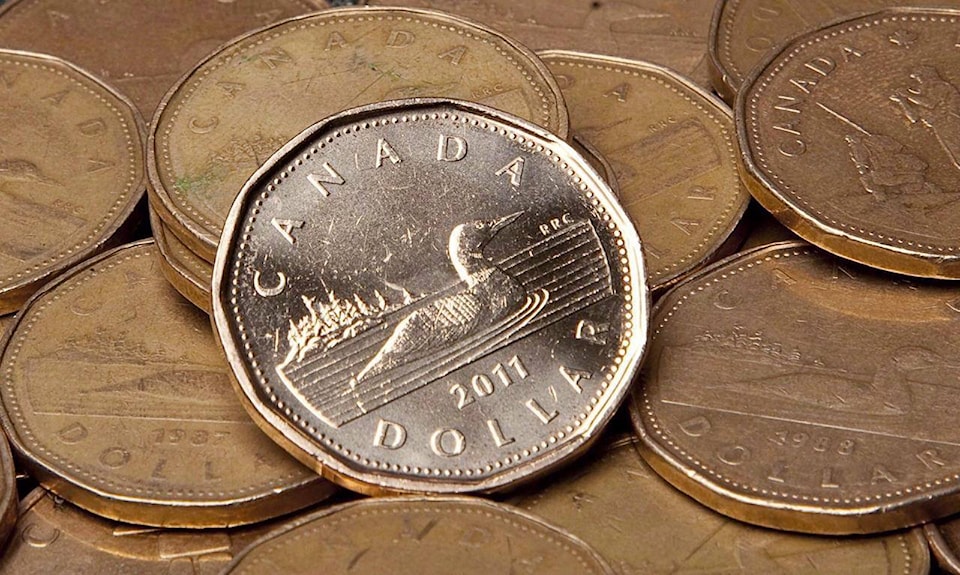Economists say the Canadian dollar is at a 91¬„¡ƒ ”∆µòsweet spot91¬„¡ƒ ”∆µô after rising for seven straight days to top 81 cents US, a point where it benefits consumers but doesn91¬„¡ƒ ”∆µôt hurt businesses too much.
The loonie traded for 81.34 cents US Thursday, the highest level since February 2018. It91¬„¡ƒ ”∆µôs been above 80 cents US since last week.
Colin Cieszynski, chief market strategist with SIA Wealth Management, said it is important to remember that the Canadian and U.S. dollars were at parity only a decade ago, so businesses won91¬„¡ƒ ”∆µôt be hurting too hard just yet.
91¬„¡ƒ ”∆µúIt91¬„¡ƒ ”∆µôs not a huge negative for business yet. In and around the high 70s and low 80s has historically been a sweet spot for the dollar,91¬„¡ƒ ”∆µù said Cieszynski.
91¬„¡ƒ ”∆µúCanadian businesses get to benefit on the dollar, but consumers aren91¬„¡ƒ ”∆µôt getting crushed on the exchange rate.91¬„¡ƒ ”∆µù
He pointed out that Canadians still buy a lot of products imported through from the United States, even with current pandemic-related border restrictions in place.
Analysts nonetheless pointed out that COVID-19 is disrupting some of the usual consumer trends around a strengthening loonie, such as its effect on cross-border shopping and tourism.
With the increased use of e-commerce in the retail sector, BMO Financial Group chief economist Douglas Porter said Canadians may more often look to U.S companies when shopping online.
Porter said he believes the strength of Canadian commodities like lumber could continue to drive up the loonie.
91¬„¡ƒ ”∆µúThere91¬„¡ƒ ”∆µôs a lot of things that are driving the currency, but probably Number 1 is just the widespread strength we91¬„¡ƒ ”∆µôre seeing in commodity markets,91¬„¡ƒ ”∆µù said Porter, saying high wheat and copper prices have contributed to the strengthening dollar.
91¬„¡ƒ ”∆µúAll kinds of things that Canada exports are at record highs or at multi-year highs.91¬„¡ƒ ”∆µù
He said the current exchange rate may not yet represent the full strength of the Canadian economy, meaning it could have further to go in the short term.
Alan Arcand, chief economist with the Canadian Manufacturers and Exporters, said the short-term effect on manufacturers is ambiguous because they both import and export goods as part of their process.
But there could be impacts on manufacturers from a higher loonie down the road.
91¬„¡ƒ ”∆µúThe negative impact is generally gradual and long-term, said Arcand.
91¬„¡ƒ ”∆µúIt91¬„¡ƒ ”∆µôs not really going to affect near-term production decisions, it91¬„¡ƒ ”∆µôs more like it affects long-term investment decisions,91¬„¡ƒ ”∆µù he said, playing a role in decisions about where it91¬„¡ƒ ”∆µôs cheaper for businesses to invest.
Both Arcand and Cieszynski shared the view that the current economic climate favours short-term rises in the loonie.
Cieszynski said Canada91¬„¡ƒ ”∆µôs natural resource industry will continue to benefit as the world looks to re-open thanks to ongoing vaccination efforts.
91¬„¡ƒ ”∆µúThe most important thing is the crisis stage of COVID appears to be ending and the focus is turning more towards opening and recovering, and that helps the loonie,91¬„¡ƒ ”∆µù said Cieszynski.
Like us on and follow us on .
Want to support local journalism? Make a donation



